Photo
I was ecxited to see a show that included Farinelli as a character but damn everything in it was so wrong! I do not know what the author thought!
- Farinelli singing “Ombra mai fu” as a child in Naples in a year 1711! An air written for another castrato. Caffarelli in 1737 by Handel. Carlo Broschi never sang Handel (at least not from free will!)
- Farinelli having chest hair. A castrato! Chest hair!
- Farinelli being short! While in fact he was almost 2 metres high!
- Farinelli debuting in Spain in 1720, while in reality he showed up in Spain in 1737 as an already established super star, not some greenhorn that still has to prove himself before public. And his first appearance was before king Felipe himself!
- Farinelli singing “Lascia ch’io pianga” again! Nothing triggers me more. The error created by movie from 1994 and repeated over and over again till this day. Though it fits the scene that was quite touching (poor Rosalia:()
- Farinelli bathing in a river with a man he barely met lol. I think he would never do this. He was too serious, too reserved, too elegant. Not to mention his physique was different and he would probably feel uncomfortable in a state of such undress!
Let’s not foget other mistakes like men being unshaved or women wearing corsets on a naked body, without any shirt.


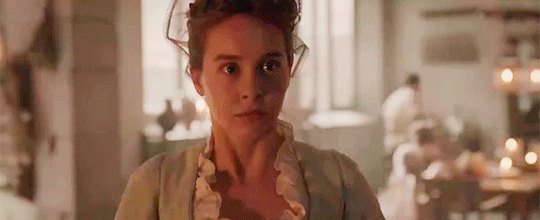

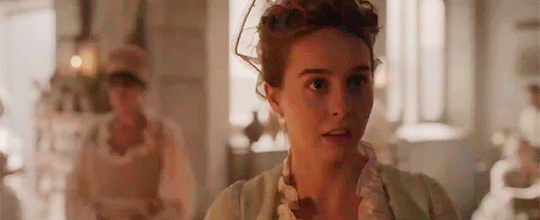
#sorry for being such ass#but had to say this aloud#Farinelli#la cocinera de castamar#carlo broschi#opera#castrato#perhaps I will make some gifsets though#the cook of castamar
153 notes
·
View notes
Photo
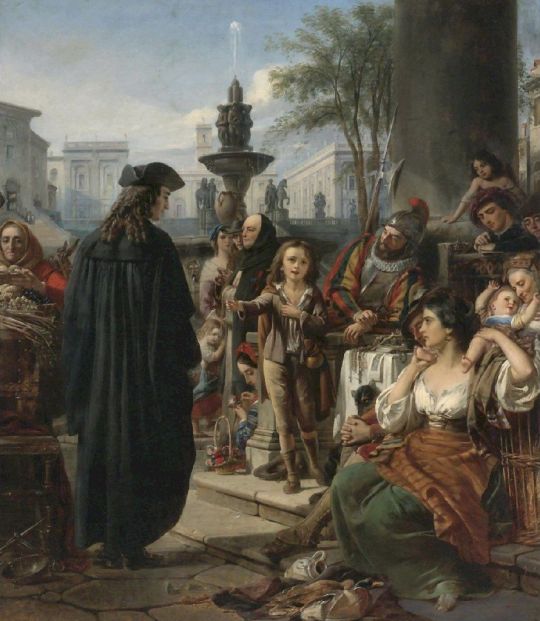
Metastasio, as a child, is discovered by Gravina singing extemporaneous verses in the streets of Rome (1853)
by Robert McInnes (British,1801–1886)
#happy birthday Metastasio#pietro metastasio#Metastasio#painting#robert mcinnes#italian opera#18 century art#opera#opera seria
8 notes
·
View notes
Photo

Jacopo Amigoni (Napoli, 1682 – Madrid, 1752)
FERDINANDO VI DI BORBONE AND BARBARA DI BRAGANZA WITH THE COURT (including Farinelli and Scarlatti on the balcony)
oil on canvas, cm 46,5x61
source: https://www.pandolfini.it/it/asta-0338/jacopo-amigoni.asp
#I was sure there was only a print#Farinelli#jacopo amigoni#opera#painting#Ferdinand VI of Spain#maria barbara of portugal#Carlo Broschi#castrato#Domenico Scarlatti#rococco
29 notes
·
View notes
Photo
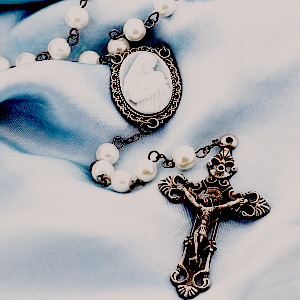
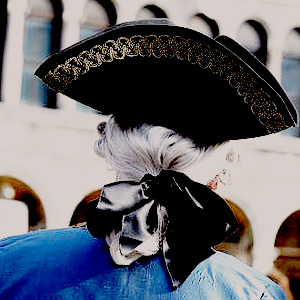
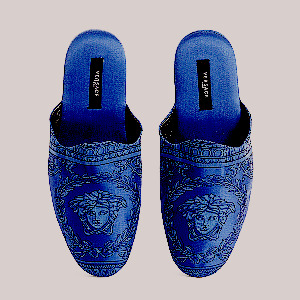




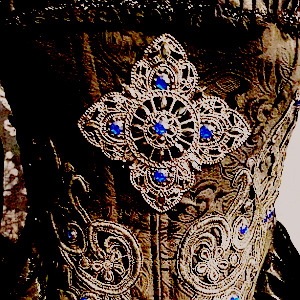

Blue: Peace, tranquility, cold, calm, stability, harmony, unity, trust, truth, confidence, conservatism, security, cleanliness, order, loyalty, sky, water, technology, depression, appetite suppressant.
#I am alive#Farinelli#carlo broschi#singers as colors#classical music#castrato#baroque music#opera#18 century#moodboard
14 notes
·
View notes
Photo
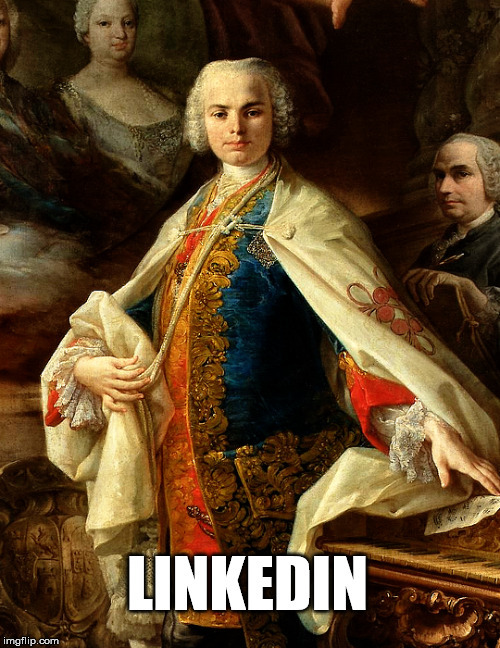



Farinelli making Dolly Parton Challenge
22 notes
·
View notes
Photo


Carlo Broschi, known as Farinelli, born 315 years ago
#happy birthday#Farinelli#Carlo Broschi#opera#baroque#music#classical music#opera seria#castrato#opera singer
17 notes
·
View notes
Photo

Vincenzo Franceschini (1680-c. 1744) - portrait of Carlo Broschi Farinelli
#Farinelli#Carlo Broschi#baroque#18 century#opera#opera singer#castrato#italian#italian opera#opera seria#franceschini#engraving#finally the bigger version of that picture!
26 notes
·
View notes
Photo






3 great composers Farinelli never had worked with:
Giovanni Bononcini (1670 – 1747)
#giovanni bononcini#composer#17 century#18 century#opera#music#classical#baroque#italian#opera seria#history#i am alive#finally posted something
7 notes
·
View notes
Photo


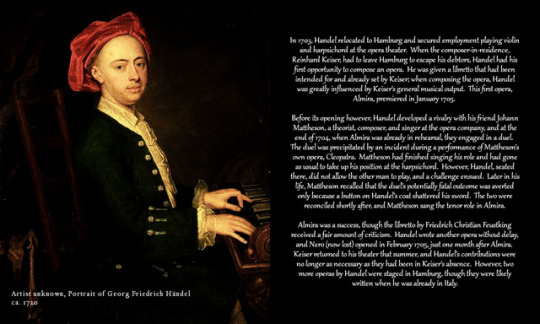





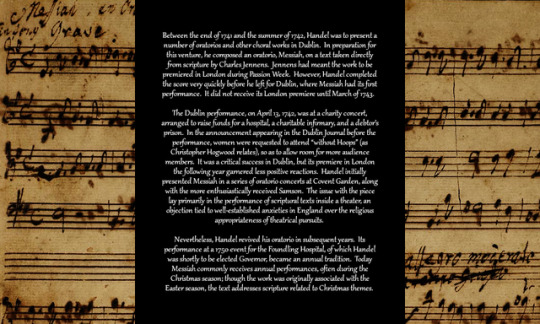

3 great composers Farinelli never had worked with:
George Frideric Handel (Georg Friedrich Händel)
(1685-1759) (source)
#georg friedrich handel#Georg Friedrich Händel#music composers#Farinelli#Carlo Broschi#18 century#baroque#history of music#musicedit#classical music#george frederic handel
24 notes
·
View notes
Photo

Carlo Maria Michelangelo Nicola Broschi (better known as Farinelli) was castrated at the age of 12 in order to preserve his pure and beautiful singing voice. Castrati were at the height of popularity during his lifetime, and Farinelli was the most famous opera singer of the 18th century.
Using inferences drawn from the paintings and busts that exist of him, along with the more recent discoveries made after exhuming his bones, I’ve made something of a facial reconstruction.
Giving new life to ancient faces is really satisfying and interesting to me, so this may eventually become a series. <3
For Commission Info, go HERE
buy me a ko-fi?
(and if you haven’t heard enough useless art history trivia, hit me up.)
14 notes
·
View notes
Photo



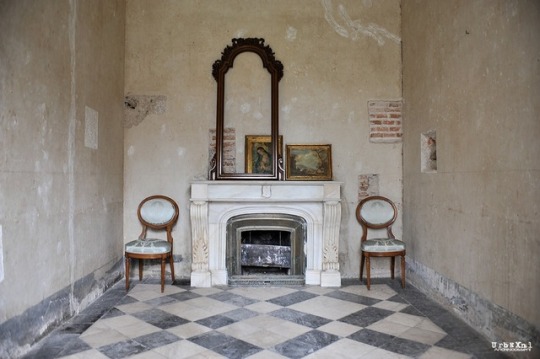




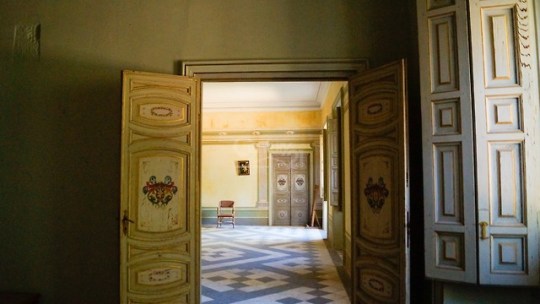
The Osuna Palace in Aranjuez
The Osuna Palace in Aranjuez is a neoclassical building that was built in 1751 for Italian artist Carlo Maria Michelangelo Nicola Broschi. He was better known under his stage name Farinelli. The palace was built by the architect Giacomo Bonavia who also created the royal palace ‘Palacio Real de Aranjuez’. After Farinelli’s banishment from the Spanish court the building became the property of the Crown for twenty years. Then it was aquired byt the IX duke of Osuna. It remained in the hands of the dukes of Osuna until Mariano Téllez-Girón, XII Duke of Osuna, who doomed to ruin, had to sell it.
In May 2018 there was a huge fire at the palace. The intense fire caused the roof to collapse. Eight fire crews were trying to prevent the flames spreading to neighbouring properties. The palace itself was lost.
Sources (+ more pictures): X X X
#Carlo Broschi#Farinelli#i am so bitter and sad#spain#opera#18 century#madrid#castrato#palace#opera seria#history
13 notes
·
View notes
Photo





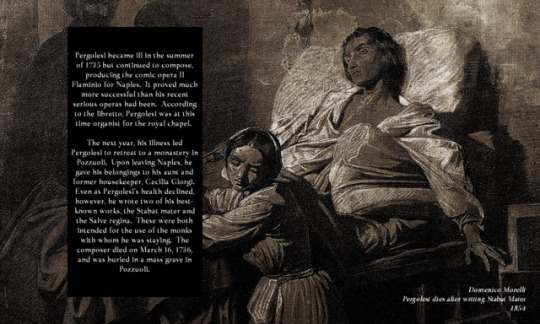
3 great composers Farinelli never had worked with:
1. Giovanni Battista Pergolesi (1710-36) (source)
#giovanni battista pergolesi#pergolesi#music composers#Farinelli#Carlo Broschi#18 century#italian#opera#baroque#history of music
10 notes
·
View notes
Audio
Bernacchi and Farinelli appeared together in Leonardo Vinci’s Il Medo in Parma in 1728. Performed to celebrate the wedding of Duke Antonio Farnese and Enrichetta d’Este, the opera brought together an astonishing group of singers centred around the contralto Vittoria Tesi as Medea, Farinelli as Medea’s former husband Jason (Giasone) and Bernacchi as Medea’s son Medos (Medo). It was Vinci’s task to write arias tailored to the vocal abilities of these three illustrious singers, but he also combined their voices in a highly unusual trio in which the older character of Giasone takes the soprano line, while Medea, who is the same age as her former husband, is a contralto part, as is her young son Medo. For considerable stretches of the trio all three voices join forces in a bravura display of their coloratura gifts.
#Farinelli#vittoria tesi#antonio bernacchi#Carlo Broschi#this is first trio written for Farinelli that I have heard?#also Farinelli as Bernacchi's step-dad?#wtf#opera#opera seria#dramma per musica#terry wey#vivica Genaux#Valer Barna-Sabadus#leonardo vinci#baroque#music#18 century#castrati#countertenor
7 notes
·
View notes
Photo

Chanteurs célèbres du XVIIIe siècle et début du XIXe siècle avec chanteurs comme la contralto Vittoria Tesi et les castrati Farinelli, Caffarelli, Gizziello et Carestini par Antonio Fedi (ca. 1800).
Famous singers of 18th and early 19th centuries, with singers such as the alto Vittoria Tesi and the castrati Farinelli, Caffarelli, Gizziello and Carestini by Antonio Fedi (ca. 1800).
86 notes
·
View notes
Photo


I send you a Canzonetta on the departure of Nice. You will find it very tender, but do not wrong me so far as to suppose me in love. You know whether I am capable of such imbecility. Pietronelli modern au
#Farinelli#Metastasio#happy valentines#carlo broschi#pietro metastasio#modern au#opera#poetry#18 century#baroque#castrati#history#opera seria#italian#pietronelli#farinelli x metastasio
16 notes
·
View notes
Photo




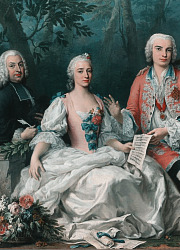




Carlo Maria Michelangelo Nicola Broschi (born January 24 1705)
He was of a very large stature, strong built, of a fair complexion, and a lively aspect. His picture, which is to be seen among the portraits and works of the famous vocal artists collected by father Martini, in the library of the minorites at Bologna, is a perfect likeness. (from The General Biographical Dictionary: containing an historical and critical account of the lives and writings of the most eminent persons in every nation, particularly the British and Irish, from the earliest accounts to the present time, 1813)
#Farinelli#Carlo Broschi#happybirthday#1705#opera#opera singer#opera seria#18 century#history of music#classical music#baroque#castrati#art#jacopo amigoni#bartolomeo nazari#Corrado Giaquinto
23 notes
·
View notes
Photo

Giuseppe Maria Crespi - portrait of Charles Hanbury Williams, c. 1725
The painting, evident international taste, has long been considered the portrait of Carlo Broschi, the famous Farinello, soprano and Bolognese origin who returned home only in advanced years. Though it is a typically aristocratic portrait and elegantly finished, it has the same expressive force as Crespi's popular portrayal, an indication of the artist's ability to maintain his natural style by approaching an aulic subject.
For comparision: Charles Hanbury Williams by Anton Raphael Mengs
#tidbit#i still think that this could be farinelli#?#giuseppe maria crespi#Farinelli#Carlo Broschi#charles hanbury williams#painting#18 century#1720s
13 notes
·
View notes